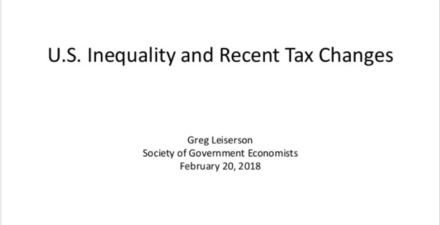Overview
Wealth inequality in the United States is high and has increased sharply in recent decades. This increase—alongside a parallel increase in income inequality—has spurred increased attention on the implications of inequality for living standards and increased interest in policy instruments that can combat inequality. Taxes on wealth are a natural policy instrument to address wealth inequality and could raise substantial revenue, while shoring up structural weaknesses in the current income tax system. This paper provides an introduction to net worth taxes, perhaps the most explicit means of taxing wealth.
Download File
Net worth taxes: What they are and how they work
Key Takeaways
- A net worth tax is an annual tax on the wealth a family owns. Wealth is the difference between the value of a family’s assets—such as a house, bank account, stocks, and ownership stakes in closely held businesses—and the value of its liabilities such as mortgages and credit card debt.
- A key feature of net worth taxes is that they aim to tax the people who ultimately own assets. Notably, a business does not pay tax on its assets. Instead, shareholders pay tax on the value of the business, which includes the value of its assets.
- The revenue potential of a net worth tax in the United States is large, even if applied only to the very wealthiest families. The wealthiest 1 percent of families holds $33 trillion in wealth, and the wealthiest 5 percent holds $57 trillion.
- The burden of a net worth tax would be highly progressive. The wealthiest 1 percent of families holds about 40 percent of all wealth, and the wealthiest 5 percent holds 65 percent of all wealth. Taxing individual wealth ownership rather than assets held by businesses allows for more precise targeting of the burden to wealth owners.
- Families with high wealth relative to their income bear relatively more of the burden of a net worth tax than an income tax. Families with low wealth relative to their income bear relatively less. A net worth tax would thus shift the tax burden not only from poor to rich, but from younger families to older families and from families of color to white families.
- Taxes on wealth—including property taxes, net worth taxes, estate taxes, and capital gains taxes, among others—are ubiquitous in the developed countries that make up the Organisation for Economic Co-operation and Development, or OECD. But net worth taxes in isolation are in decline. In 1990, 12 OECD countries had a net worth tax. In 2018, only three OECD countries had a net worth tax: Switzerland, Spain, and Norway. The shift away from net worth taxes is part of a broader trend of reduced taxation of the wealthy—a trend that also is reflected in reductions in top income tax rates and top corporate tax rates.
- There are important economic relationships between taxes on wealth and taxes on investment income, and the distinction between the two is not always clear cut. Assets have value because of the income (implicit or explicit) they are expected to generate. As such, taxing wealth through a net worth tax and taxing income from wealth through a tax on investment income can achieve similar ends.
Related
Explore the Equitable Growth network of experts around the country and get answers to today's most pressing questions!






